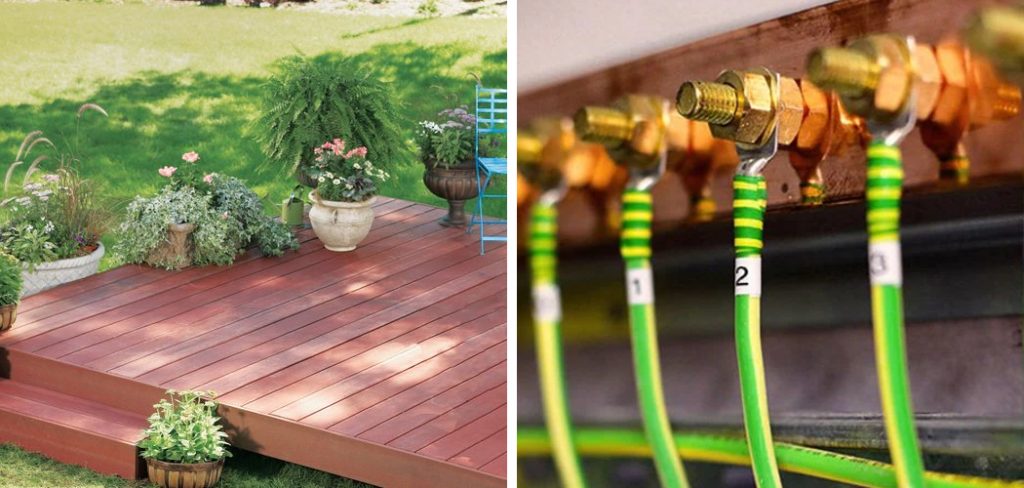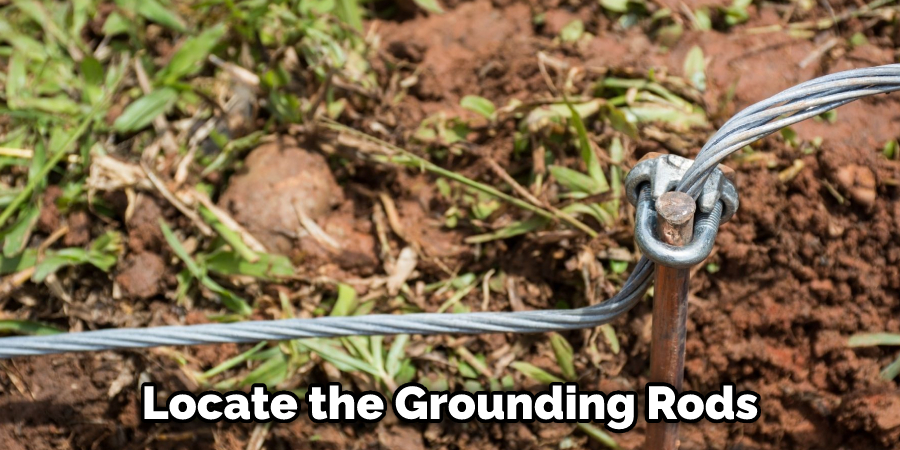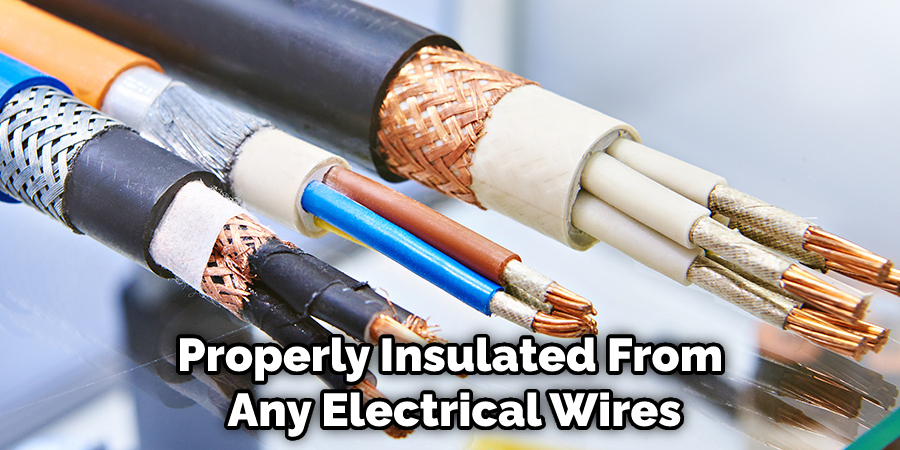Do you have a wooden or metallic deck that is susceptible to static electricity? It can be an uncomfortable experience, not to mention potentially dangerous. Fortunately, there are steps you can take to ground your deck and protect yourself and anyone else who may use it from the threat of electric shocks. In this blog post, we’ll discuss how to ground a deck from static electricity. Keep reading for everything you need to know about safely protecting yourself from static electricity in your outdoor spaces!

Grounding your deck can help ensure that any static electricity collected is safely dissipated and does not present a potential hazard to people or property. Not grounding your deck could potentially lead to an electric shock, which could potentially cause serious injury. Knowing how to properly ground your deck can save you immense frustration, time, and money on repair costs down the road. This article details how to effectively ground a wooden deck from static electricity so that you don’t have to worry about safety issues in the future.
What is Static Electricity?
Before we dive into how to ground a deck, let’s first understand what static electricity actually is. We experience static electricity when there is an imbalance of electric charges on the surface of an object. This can happen due to friction between two materials, such as when you walk across a carpet and then touch a metal doorknob. The excess charges build up and when they come into contact with an object with a different charge, like the doorknob, they discharge and create a small electric shock.
Why Do You Need to Ground a Deck From Static Electricity?
There are many reasons why it is important to ground a deck from static electricity. Such as:
1. Safety
One of the primary reasons to ground a deck from static electricity is safety. Without adequate grounding, the potential exists for an electric shock or spark in hazardous conditions. By providing an electrical path away from the structure and into the ground, static electricity can be safely discharged away from people and materials that may be present on or near the deck.
2. Protection
Grounding a deck from static electricity also helps to protect the structure itself. If lightning strikes or an appliance is used on the deck that has a short in the wiring, grounding provides a safe path for the electric current to travel out and away from the deck without causing damage.
3. Prevention
Finally, grounding a deck from static electricity is the best way to prevent static charge buildup on the deck surface. Without proper grounding, the potential exists for a spark or shock when someone touches the deck in dry weather with low humidity. This can be uncomfortable and even dangerous in some cases.
By providing an electrical path for static electricity to dissipate into the ground, these shocks are prevented, making the deck safer and more comfortable for everyone.
Needed Materials:
To properly ground a deck from static electricity, you will need the following materials:
Copper Grounding Rods:
These rods are inserted into the ground to provide a safe path for electricity to travel away from the deck.
Copper Wire:
This wire is used to connect the grounding rods together and form a complete circuit.
Clamp Connectors:
These connectors are used to securely attach the copper wire to the grounding rods.
Grounding Rod Driver:
This tool is used to drive the grounding rods into the ground.
Hammer:
A hammer is needed to help drive the grounding rods into the ground if using a manual driver or for stubborn areas where the ground may be harder.
Wire Strippers:
These tools are used to remove the insulation from the ends of the copper wire for proper connectivity.
How to Ground a Deck From Static Electricity in 9 Easy Steps
Step 1: Locate the Grounding Rods
One of the most important steps to grounding a deck from static electricity is to locate the grounding rods. These are typically installed in the foundation of the structure and should be visible either near the edge of your deck or near its center. You may need to use a metal detector or consult with a professional if you are having trouble locating the grounding rods. The rods will typically be at least 6 feet long and made of copper. It is important to ensure that the rods are in good condition and have not been damaged by corrosion.

Step 2: Find an Electrical Ground Source
Next, you’ll need to find an electrical ground source, such as a copper wire, a ground rod, or an electrical panel. If you don’t have access to any of these sources, then you may want to consider installing one yourself. This can be a complicated process, so it is recommended to consult with a professional electrical contractor if you are unsure of how to proceed. If you already have an electrical ground source installed, ensure that it is in good condition and properly connected to the grounding rods.
Step 3: Connect the Grounding Rods and Source
Once you’ve located both the grounding rods and the electrical source, it’s time to connect them. Make sure that the rods are securely placed in the ground and that you connect them with a minimum of 8 gauge wire. This wire should run from the grounding rods to your electrical source, creating a continuous path for static electricity to discharge into the ground. You may need to use grounding clamps and connectors to secure the wire. Although 8 gauge wire is the minimum, it is recommended to use a thicker gauge for added safety.
Step 4: Secure the Grounding Wire to the Deck Structure
Now, it’s time to attach the grounding wire from your source to the deck structure itself. Make sure that you use metal fasteners when attaching it so that it won’t come loose or become damaged. Also, make sure that you test it a few times to ensure that it is properly attached. But don’t worry. We’ll go over the testing in more detail at the next step. It is important to secure the grounding wire to the deck structure as this will help ensure that any static electricity collected on the surface is safely discharged into the ground.
Step 5: Add an Anti-Static Mat
Finally, add an anti-static mat to the floor of your deck. This will act as a barrier between the deck and any surrounding materials that might carry static electricity. The mat should be placed firmly against the floor of your deck and secured with metal fasteners. It is important to choose a mat that is specifically designed for outdoor use and can withstand exposure to the elements. But don’t worry; most anti-static mats are made from durable materials such as rubber or PVC and can withstand harsh weather conditions.
Step 6: Install a Static Discharge Cable
For added protection, you can also install a static discharge cable between the deck and the ground. This cable will provide an additional path for any static electricity to be safely discharged into the ground. It is best to consult with a professional electrical contractor for this step, as it involves working with live electricity. It is also important to regularly check and maintain the static discharge cable to ensure that it is functioning properly. Be sure to follow all safety precautions when working with electricity.
Step 7: Connect Appliances to Grounded Outlets
When using electrical appliances on your deck, make sure they are connected to grounded outlets. This will prevent any potential buildup of static electricity on the deck. If you are using extension cords, make sure they are heavy-duty and have three prongs to allow for proper grounding. Always check the condition of your outlets and extension cords before use. The more connections you have to a proper grounding source, the safer your deck will be from static electricity. If you are unsure about the condition of your outlets, consult with a professional electrician.
Step 8: Regularly Test and Inspect
It is essential to regularly test and inspect your grounding system to ensure it is working properly. Check for any loose connections or damage, and make repairs as necessary. You can also use a multimeter to test the continuity of your grounding wire and ensure it is properly connected. It is recommended to do these checks at least once a year or more frequently if you live in an area with frequent lightning storms. It is also important to test the anti-static mat and static discharge cable if you have them installed.

Step 9: Consult a Professional
If you are unsure about how to properly ground your deck or are experiencing issues with static electricity despite following these steps, it is best to consult a professional electrician for assistance. They will be able to assess the situation and provide expert advice on how to improve the grounding of your deck. It is always better to be safe than sorry when it comes to handling electricity. Don’t hesitate to seek professional help if you are unsure about any aspect of the grounding process.
By taking these six easy steps, you can ensure that your deck is properly grounded from static electricity and provide yourself with the peace of mind that comes with knowing that your family and friends are safe on it. So get out there and ground your deck today!
Some Additional Tips to Ground a Deck From Static Electricity
1. Use Metal Conduits or Metal Pipes
One of the best ways to ground your deck is to attach a metal conduit or pipe to the bottom of it. This creates an electrical connection between the ground and your deck, allowing any built-up static electricity to dissipate safely into the earth.
2. Use Ground Clamps
Another way to ground your deck is to use ground clamps. These clamps attach to the bottom of your deck and have a connector that can be attached to an earthing rod or other grounding material.
3. Install an Earthing Rod
If you don’t want to use metal conduits or ground clamps, another option is to install an earthing rod into the ground. This rod will provide a direct connection to the earth, allowing any electricity that has built up in your deck to dissipate safely.
4. Use Anti-Static Paint
Lastly, you can use anti-static paint on your deck. This paint acts like an electrical insulator, preventing static electricity from building up and discharging into the ground. It’s a great way to protect your deck and the people who use it.

Following these tips can help you ground your deck from static electricity, ensuring that everyone stays safe while enjoying the outdoors. Be sure to contact a professional electrician if you have any questions or are unsure of how to properly ground your deck. Safety should always be your primary concern when it comes to electricity.
Additional Tips:
- It is Important to Properly Maintain Your Deck’s Grounding System, as Any Damage or Wear Can Compromise Its Effectiveness.
- Avoid Using Flammable Materials on Your Deck, as Static Electricity Can Potentially Ignite Them.
- Teach Your Family and Friends About the Importance of Proper Grounding and How to Safely Use Electrical Appliances on the Deck.
- Consider Installing a Lightning Rod on Your Property for Added Protection Against Lightning Strikes.
- If You Live in an Area With Frequent Thunderstorms, It is Recommended to Unplug Electrical Appliances When Not in Use to Prevent Potential Damage From Power Surges.
- Do Not Attempt to Fix or Modify Your Deck’s Grounding System on Your Own if You Are Not Experienced With Electrical Work. Always Consult a Professional for Assistance.
- Regularly Check the Weather Forecast Before Using Your Deck and Avoid Using It During Severe Thunderstorms.
- If You Notice Any Unusual Electrical Activity on Your Deck, Such as Sparks or Shocks, Immediately Stop Using It and Consult a Professional for Further Inspection.
Frequently Asked Questions
What Precautions Should I Take Before Grounding My Deck?
Before beginning the process of grounding your deck, take a few precautions to ensure that you are taking the necessary safety measures. Make sure that all electrical outlets near the deck and any exposed wires are properly insulated, and turn off the power before beginning work on the deck. Wear proper attire such as rubber-soled shoes and protective eye gear, while working. If you are uncomfortable with the idea of grounding your deck, contact an experienced electrician to take care of it for you.
How Can I Tell If My Deck Is Grounded?
Once you have followed the instructions for grounding your deck, you can use a multimeter to test if it is grounded. Set the multimeter to the ohms setting, and touch one lead of the meter to an unpainted portion of your deck and the other lead to a ground wire. If there is no reading on the multimeter, then your deck is not properly grounded.
What Are The Benefits Of Grounding My Deck?
Grounding your deck can help to protect you, your family and your guests from static electric shocks. It also helps to prevent damage to electronic equipment that may be used on the deck since it will direct any electrical current safely away rather than allowing it to build up in one area.
Grounding can also help protect against lightning strikes, as the current will be directed away from the deck and the home. Finally, grounding your deck can also provide a source of power for low-voltage LED lights or other electrical equipment that may be used outdoors. Grounded decks are much safer than those without grounds.
Are There Any Dangers of Grounding My Deck?
If the ground wire is not correctly connected to your deck and/or the ground rod, there may be a risk of electric shock. Additionally, if you are using metal fasteners to attach components to your deck, make sure that they have been properly insulated from any electrical wires or outlets.

Improperly grounding a deck can also lead to damage of electronic equipment or appliances that are used on the deck. It is important to ensure that all the components are properly installed and connected before using them.
Conclusion
Now you know how to ground a deck from static electricity and the importance of doing so. Grounding your deck is one of the best ways to ensure safety and peace of mind when enjoying your outdoor space. Taking a few extra steps in the beginning can save you a lot of trouble down the road, so make sure that you follow these tips and do it right!
If you’re not comfortable with the process, contact a professional electrician to help you get it done safely. With the right precautions, your deck can be a safe and enjoyable place for friends and family to gather. Happy entertaining!
You Can Check It Out to Attach Deck Boards to Trailer

